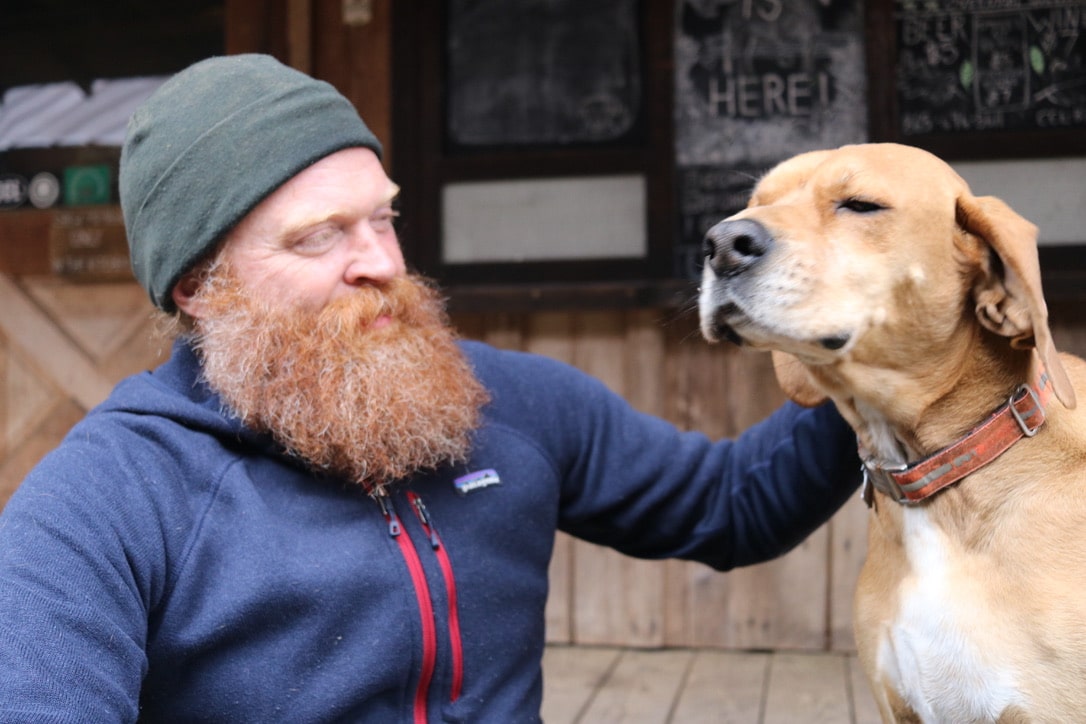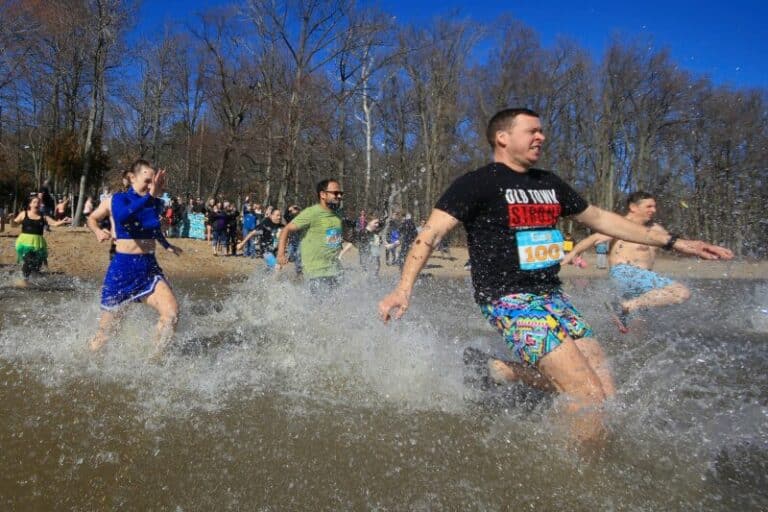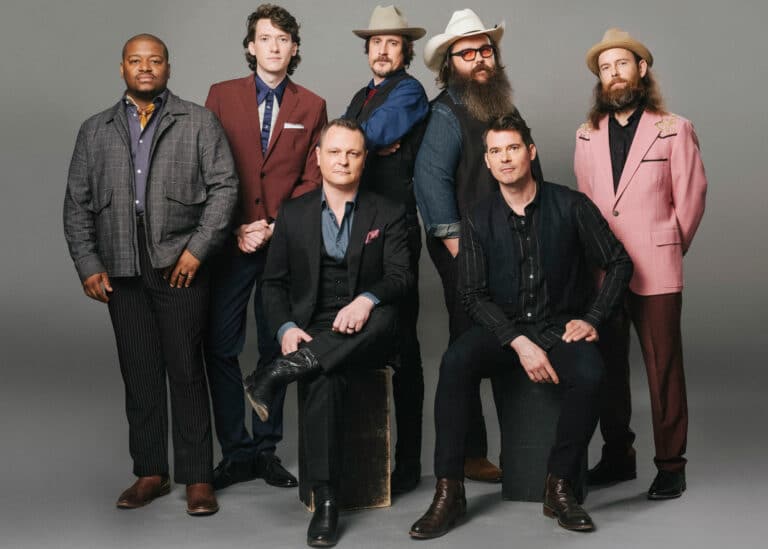This Off-Grid Lodge in Tennessee’s Big South Fork National River & Recreation Area Can Only Be Reached Via Trail
Cover Photo by Abby Lee Hood
Charit Creek Lodge was, at one time, a place where even a Hatfield—of the famed Hatfield and McCoy family drama—could go to find peace and isolation. William Riley Hatfield was born in 1829 and buried at Charit Creek in Eastern Tennessee in 1892. His grave leans a little crookedly, one of the few still legible, in a small plot just outside the main portion of the lodge.
Charit Creek, just outside Jamestown, TN, is among the oldest lodges in the United States, estimated to have been built in 1817 by Jonathan Blevins, a long hunter searching for a good location to hunt bears, deer, and other wildlife. By some accounts and due to a lack of proper records of its exact opening date, it may be the oldest in the country.
Charit Creek Lodge is heavy with two centuries of history—it was named after Blevins’ daughter, Charity, who drowned in the creek outside the entrance. There is still no electricity or cell phone service, a welcome respite for many of its guests, and the off-grid lodge can only be reached via a one-mile hiking trail or a 1.5-mile horse trail. But it isn’t without amenities; there are hot home-cooked meals for breakfast and dinner, a shower house complete with propane-heated water and even S’mores kits for purchase. Despite its remote location in the Big South Fork National River & Recreation Area and long, often strange story, business owner Gregg White, the lodge’s current facilitator, is dedicated to both its history and its future.
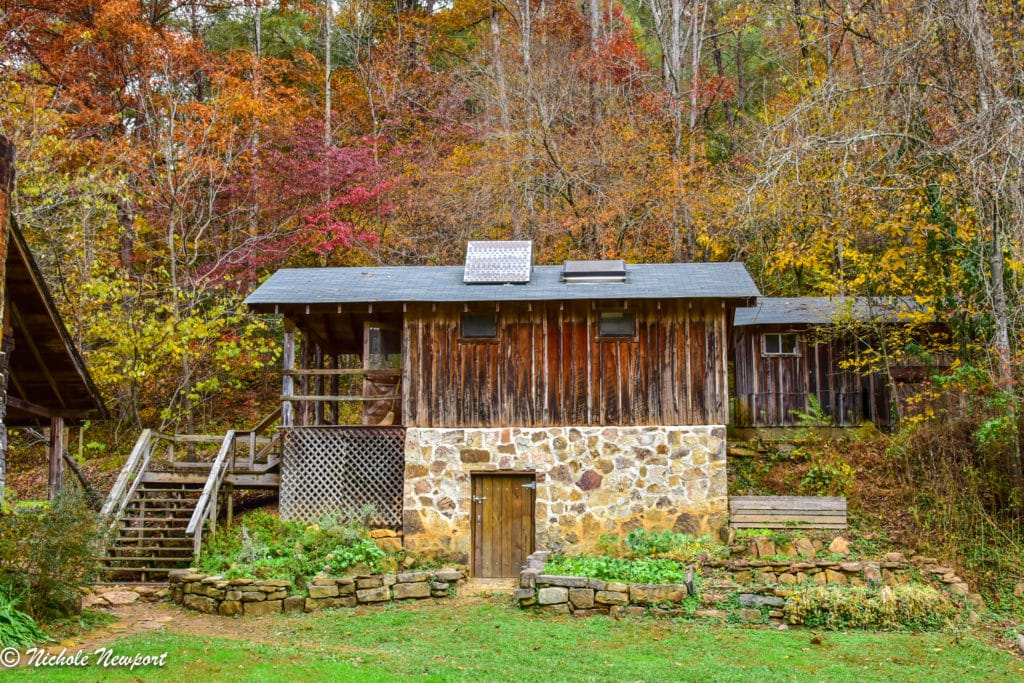
White’s background is in hospitality. He spent his 30s starting restaurants and running a catering business in nearby Knoxville, Tenn., where he still owns a home and frequently visits. White said he has always loved traveling throughout the Great Smoky Mountains, and first visited the lodge in 2010 with his then-6-year-old daughter. The connection to the land was instant for White.
In the spring of 2012, he worked as on-site manager for the season and further saw its potential, learning a lot of living off-the-grid and cultivating a passion for his unique hospitality brand. In 2014, White and his business partner won a contract with the National Park Service to run Charit Creek, and recently, White bought out his partner to run the business on his own.
White said the lodge has experienced incredible growth since his first visit, and since his first few months of running the business. In the beginning, days might pass without guests, but that doesn’t happen anymore. The crew has grown from only himself to eight employees who assist with meals, work around the property, upkeep of the facilities, and more. With the addition of new cabins, White said the lodge is able to offer a connection to nature with the added benefits of a comfortable bed, hot meals and hot showers.
“Hiring the first person was a big deal,” White said in an interview. “Days without guests are a thing of the past.”
The turnaround wasn’t easy. White estimated that at least 1,800 man hours were spent cleaning out the old horse barn constructed in the 90s, outfitting it with rooms to sleep in and a safe place for travelers to stable their horses. Another 2,000 hours was spent clearing the surrounding field of invasive species, revealing the graveyard, more of the original fencing, and a ditch White was unaware of. He introduced tree tents to the property, available to book April to October, nestled beside the quietly running creek. White also offers an impeccable menu including dishes like carrot souffle, garlic mashed potatoes, vegan chocolate cake, homemade pancakes, and much more. After briefly shutting down due to the COVID-19 pandemic, the lodge is back up and running with new safety measures in place.
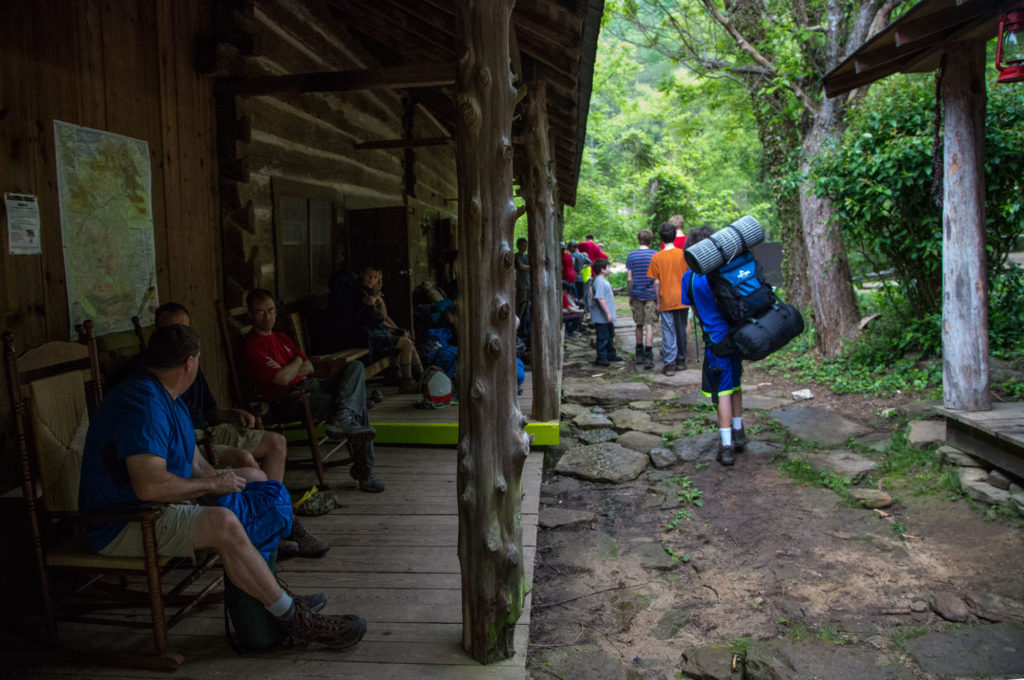
Guests are served dinner in the dining hall, socially distanced and without staff present. The food is prepared and served before guests arrive in the hall, and masks are mandatory for staff. Guests are encouraged to wear them, and there is hand sanitizer in every room, plus sinks to wash hands frequently both in the bath house and on the porch of the main cabin.
The hard work has paid off, and guests are eager to show their enthusiasm for the lodge. One family staying at the lodge said they are repeat customers, and had converted their daughter’s boyfriend to come for their latest trip. In the past, they celebrated Thanksgiving at the lodge as a way to stay active and avoid the annual task of cooking for the family.
“We absolutely love this place,” Neal Caldwell, the family’s father and group leader said. “[The lodge] did a huge feast for Thanksgiving. It was sold out.”
Caldwell said the family’s favorite trail in the area was the Sawmill Trail, almost eight miles long. It includes sights like Slave Falls, Needle Arch, and the Twin Arches. Caldwell said his family prefers half-day or day-long hikes, but those aren’t the only trails in the area and aren’t required in order to get to the lodge.
Hikers can easily take a mile-long trail downhill from the closest parking area in Big South Fork, a moderately easy journey that takes about 40 minutes. It’s also relatively easy to see one of the largest attractions in the area, the Twin Arches. According to the National Park Service, the North Arch is 62 feet tall and 93 feet long. Its sibling, the South Arch, is 103 feet high and 135 feet long. The two rock formations are made of sandstone, making the ground nearby soft with sand eroded from their base and top. They are only a one-mile hike from the lodge, making it a location for a variety of travelers regardless of their hiking abilities.
White said he plans to continue restorative work like clearing invasive species and preserving the natural and historic landscape of the lodge. He is also dedicated to ensuring its future, and spends many hours developing environmentally-friendly recycling and compost plans. One compost pile on the property won’t be ready for at least three decades, a timeframe White has no trouble considering spending if he’s allowed.
Although he won the last contract to run the lodge, there’s no guarantee he will continue to do so. The National Park Service can choose anyone who bids, and White is worried about increasing competition in the future, likely a direct result of the attention, profit and increased traffic he brought about himself. But that doesn’t mean he plans to give up any time soon.
“I make jokes when I give tours of the gravesite and I say, ‘Now, this is my spot right here,’” White said. “It’s hard not to call this place home.”
